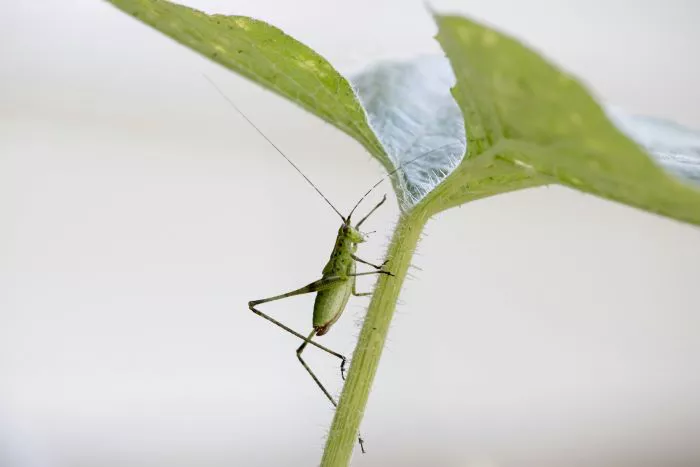Rose slugs are a common pest that can cause significant damage to rose plants. These pests are actually the larvae of certain sawflies and are known for their voracious appetite for rose leaves. When left unchecked, rose slugs can defoliate a plant, leading to weakened health and reduced flowering. Understanding how to identify, prevent, and control rose slugs is essential for maintaining healthy roses. This article provides a comprehensive guide on how to effectively kill rose slugs while promoting the overall health of your rose plants.
Identifying Rose Slugs
Identifying rose slugs is the first step in managing their populations. These pests are typically green or brown, resembling small caterpillars. They can grow up to one inch long and have a smooth, slimy appearance. Rose slugs are often found on the undersides of leaves, where they feed by scraping away the leaf tissue.
Look for the following signs of rose slug infestation:
Skeletonized Leaves: The most noticeable damage caused by rose slugs is the skeletonization of leaves. This occurs when the slugs eat the softer parts of the leaves, leaving behind a lace-like appearance.
Defoliation: Heavy infestations can lead to significant leaf loss, which can weaken the plant and affect its ability to photosynthesize.
Excrement: You may also notice small black droppings on the leaves or around the base of the plant, which are a sign of rose slug activity.
Prevention Strategies
Preventing rose slug infestations is crucial for maintaining healthy roses. A proactive approach can help minimize the risk of these pests. Consider the following prevention strategies:
Choose Resistant Varieties: Some rose varieties are more resistant to rose slugs than others. Research and select varieties known for their pest resistance.
Maintain Plant Health: Healthy plants are less susceptible to pest infestations. Provide proper watering, fertilization, and care to promote robust growth.
Encourage Beneficial Insects: Natural predators such as parasitic wasps and birds can help control rose slug populations. Planting a diverse range of flowers can attract these beneficial insects to your garden.
Regular Monitoring: Inspect your roses regularly for early signs of rose slugs. Catching an infestation early can prevent more severe damage.
Cultural Control Methods
If you discover rose slugs on your roses, several cultural control methods can help manage their populations without resorting to chemical treatments.
Hand Removal: For small infestations, you can remove rose slugs by hand. Wear gloves and inspect the undersides of leaves, removing any slugs you find. Drop them into a bucket of soapy water to ensure they do not return.
Water Spray: A strong spray of water can dislodge rose slugs from the plants. Use a garden hose with a spray nozzle to target the undersides of leaves, where slugs are often hiding.
Neem Oil: Neem oil is a natural insecticide derived from the seeds of the neem tree. It disrupts the life cycle of rose slugs and can be used as a preventive measure. Mix according to the package instructions and spray on affected plants, ensuring thorough coverage.
Insecticidal Soap: Insecticidal soap is effective against soft-bodied insects like rose slugs. Mix one tablespoon of mild liquid soap with a quart of water and spray directly onto the slugs. The soap suffocates the pests and disrupts their cell membranes.
Chemical Control Methods
If cultural methods do not effectively control the rose slug population, you may need to consider chemical treatments. Always follow the manufacturer’s instructions and consider the impact on beneficial insects.
Pyrethrin: Pyrethrin is a natural insecticide derived from chrysanthemum flowers. It is effective against rose slugs but can also harm beneficial insects. Use it sparingly and follow application guidelines carefully.
Horticultural Oils: Horticultural oils can suffocate rose slugs and help control other pests. Apply these oils during cooler parts of the day to prevent leaf burn.
Systemic Insecticides: These chemicals are absorbed by the plant and can provide longer-lasting protection against rose slugs. However, they can also affect beneficial insects. Use these as a last resort and follow all safety recommendations.
Post-Treatment Care
After treating your roses for rose slugs, it is essential to monitor the plants for any signs of reinfestation. Regularly inspect the leaves and new growth for slugs or their damage. Consider the following post-treatment care tips:
Maintain Plant Health: Continue to provide proper care, including regular watering, fertilization, and pruning. Healthy plants are less likely to attract pests.
Encourage Beneficial Insects: Keep planting flowers that attract beneficial insects to help control rose slug populations naturally.
Evaluate Treatment Effectiveness: If rose slugs return, evaluate the effectiveness of your treatment method. You may need to try different approaches or combinations of methods for better results.
Record Keeping: Keep a record of when and how you treated your roses. This information can help you identify patterns and improve your pest management strategies in the future.
Conclusion
Rose slugs can cause significant damage to your rose plants, but with proper identification, prevention, and treatment methods, you can effectively manage these pests. Regular monitoring and maintaining the health of your roses are essential for preventing infestations. When rose slugs do appear, consider cultural control methods first, followed by chemical treatments if necessary. By taking a proactive approach, you can protect your roses and enjoy their beauty throughout the growing season. With diligence and care, you can keep your roses healthy and free from rose slugs, allowing them to thrive and flourish.


